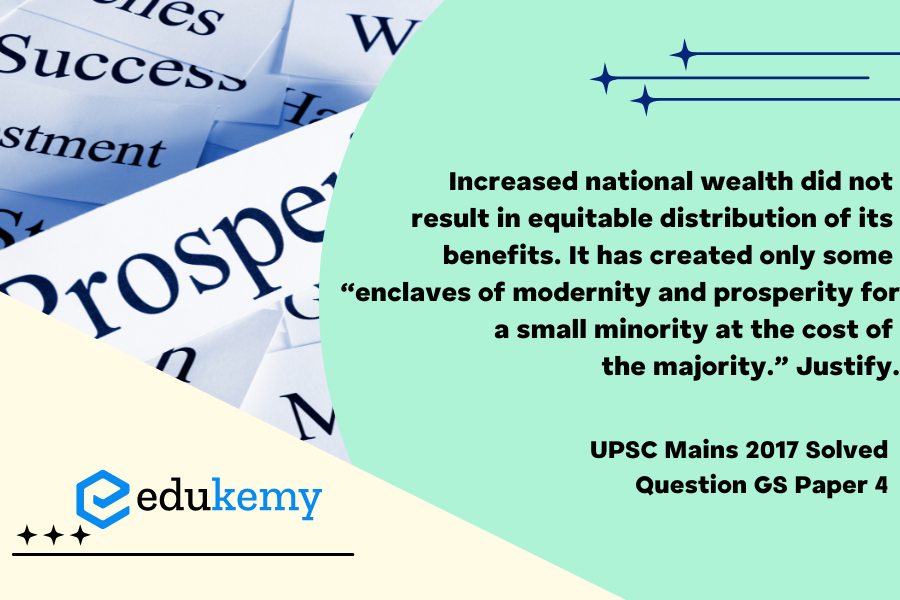The surge in national wealth, ostensibly a marker of economic progress, has regrettably failed to translate into a fair and widespread distribution of its advantages. Instead of fostering a more egalitarian society, this economic growth has given rise to isolated pockets of affluence and modernity, largely confined to a privileged minority. The purported benefits of increased national wealth seem to be concentrated in select enclaves, leaving the majority of the population on the periphery of progress. This glaring disparity is not merely an unintended consequence but rather a systemic flaw in the distribution mechanisms. The socio-economic landscape has become characterized by stark contrasts, where a small fraction enjoys the fruits of prosperity while the larger populace bears the brunt of unequal access to opportunities and resources. Thus, the ostensibly positive impact of heightened national wealth reveals itself as a divisive force that accentuates disparities, deepening the chasm between the privileged few and the marginalized majority.
Tag: Essence, determinants and consequences of Ethics in-human actions.
Contents
Decoding the Question:
- In the Introduction, try to explain the context.
- In Body, discuss the reasons for unequal distribution of wealth.
- In Conclusion, try to mention your view.
Answer:
According to a recent research paper by Thomas Piketty, the eminent French economist, the top 0.1% of earners in India captured a higher share of the total growth than the bottom 50%. This shows that there has been no ‘inclusive growth’ in India.
The skewed income distribution patterns depict that the policy making in India has neither favored the ‘utilitarian approach’ nor the ‘common goods; approach. The nexus between the politicians and corporate (‘crony capitalism’) and the resulting corruption has led to concentration of wealth and power in the hands of a small minority.
Reasons for unequal distribution of wealth:
- With economic growth, well off people utilized the opportunity to grow and improve their lives but people at the lower strata could not get the opportunity to improve their lives.
- For example, educated individuals were able to corner most of the jobs whereas poorer and illiterate individuals continued their misery-filled lives.
Unequal distribution of power:
- For a better life with growth and prosperity the need is political power which was not available to poorer sections. Owing to this they missed the opportunity to influence policy making at the highest level.
- For example, only a small number of backward class leaders were successful to reach the highest political levels of decision making.
The Social Mindset:
- This at the start of the development era was very reserved and conservative which still practiced exclusions overwhelmingly. This combined with taboo prevented backward sections to join mainstream and be a party to development.
Rather than assuming the role of trustees of wealth, as Gandhi prescribed, there is an absolute lack of empathy and values like altruism and philanthropy. Due to the general degradation in the moral fiber of society, there is unwillingness among the ‘haves’ to part with the wealth and power for the benefit of the majority. Consequently, India is witnessing the phenomena of ‘enclaves of modernity and prosperity for a small minority at the cost of the majority’.
The constitution of India under DPSP( Article-39b and 39c) mentions the need for the State to check ”that the ownership of resources and control of means of production are distributed equitably and are not concentrated in the hands of few”.
In case you still have your doubts, contact us on 9811333901.
For UPSC Prelims Resources, Click here
For Daily Updates and Study Material:
Join our Telegram Channel – Edukemy for IAS
- 1. Learn through Videos – here
- 2. Be Exam Ready by Practicing Daily MCQs – here
- 3. Daily Newsletter – Get all your Current Affairs Covered – here
- 4. Mains Answer Writing Practice – here


